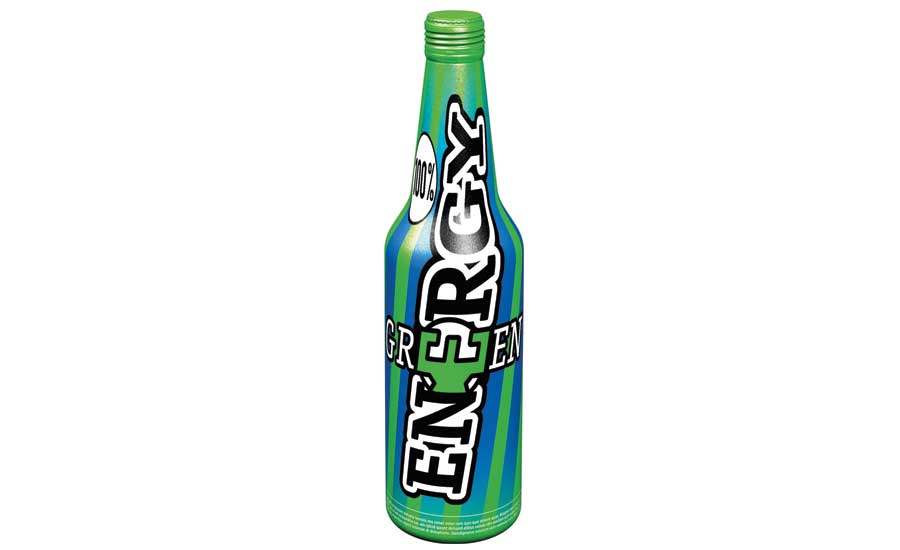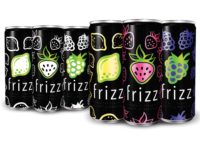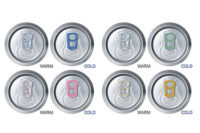In the competitive beverage marketplace, products need to create a memorable first impression and stand out from the rest on retail store shelves. Inks and coatings help to convey what is inside a can or bottle, but also play a key role in differentiating brands, according to packaging materials experts.
Traditionally, packaging was used for functional purposes like transport, storage and protection, but today’s beverage packages facilitate communication, advertising, branding, security and sales, according to Penny Holland, vice president of marketing of North American inks at Parsippany, N.J.-based Sun Chemical.
“Beverage packaging can be enhanced by adding a variety of special-effects coatings, such as glitter, pear or metallic coatings, combined with contrasting matte and gloss effects, which provide visual contrast, stimulation and differentiation,” she says.
For example, Sun Chemical offers a wide range of coatings, including its SunInspire Metallics, which provide metallic tones and bright mirror-like silver and gold coatings and effects that can help separate a package from its competition.
Additionally, pigmented coatings can yield a color-shifting effect that change color depending on the angle of view, she says. The coating lines come in a variety of colors as well as color shifts, like blue to green or yellow to orange, she adds.
“This is very enticing to customers as they pass down a shopping aisle and the package seems to morph as they pass by the display,” she says.
However, when it comes to printing on cans, experts note that many challenges need to be overcome, including a limitation on ink film thickness for dry-offset printing, changing regulatory policies and restrictions on ink formulating. Additionally, poor ink laydown can be an issue as it can impact color, as well as decorator performance, heat consistency and speed.
Ron Skotleski director of marketing at Philadelphia-based Crown Holdings Inc., notes that printing on cans is not a science, leaving room for improvements and tweaks.
Yet, the need to match customer-requested colors from the Patone Matching System (PMS) on aluminum remains one of the biggest industry challenges, according to experts.
Paul Fennessy, director of graphics for Crown Holdings’ North America Beverage Division, adds that cross-contamination of inks, especially for wet-on-wet applications, can present obstacles. He notes that inks must be colorfast against oven heat, taking into account swell times and abrasion of the inks because inks do not have abrasion resistance.
Alexander Folloso, manager of metal decorating research and development at Schaumburg, Ill.-based INX International Ink Co., expresses similar sentiments. “The futility of matching colors on bright aluminum, even white base-coated aluminum, to the colors in the PMS is something we deal with every day.”
Overcoming moisture resistance is yet another challenge, notes Rochester, N.Y.-based Hammer Packaging’s Hart Swisher, the company’s chief research and innovation director.
“The goal is to ensure that the inks and coatings have good functionality for the life of the product,” he explains. “A great example would be how the adhesion might withstand submersion in an ice bath.”
The art of decorating
Sun Chemical’s Holland notes that printing on metal, either aluminum or steel, is so different from printing on film or paper that many refer to it as “decorating” rather than “printing.”
“Beverage-can decorators are large eight-station rotary-offset presses that can process 2,500 [cans per minute] (CPM),” she explains. “Decorating is performed in line, after cans are formed, drawn and wall ironed (DWI) with mandrels, from new or recycled aluminum coils. Highly engineered solvent inks have to aggressively bond to metal and be compatible with water-based overprint varnishes (OPV) and then withstand additional processing steps.”
Durability throughout processing also is vital. “Metal Deco inks have to have high bonding, resistance to cracking and be thermally tolerant of process steps,” Holland says.
Experts note that several trends in the beverage marketplace are impacting inks and coatings, including the decline in traditional carbonated soft drinks, with new brands and entirely new beverage categories springing up in their place, Crown Holding’s Skotleski notes.
“These new brands are dependent upon product differentiation,” he says. ”The beverage industry is evolving, combined with changing consumer behaviors, and it is all intersecting with a legacy packaging format — the aluminum can.
“It is a hotbed for innovation and brand differentiation,” Skotleski continues. “New inks and varnish capabilities are being created constantly, and they finally have a home.”
Beverage brands are embracing the new technology. For example, Monster Energy uses tactile finishes, while matte finish and complex graphics have emerged as an art form in the craft beer segment, Skotleski notes.
The future of inks and coatings is bright, with experts predicting cutting-edge innovation inks and varnishes that will help packages pop, offer new functionality, more graphic appeal and growth with packaging and printed electronics.
“If digital printing can match the efficiencies and speeds of traditional analog printing, it will be a game-changer,” INX’s Folloso says.




